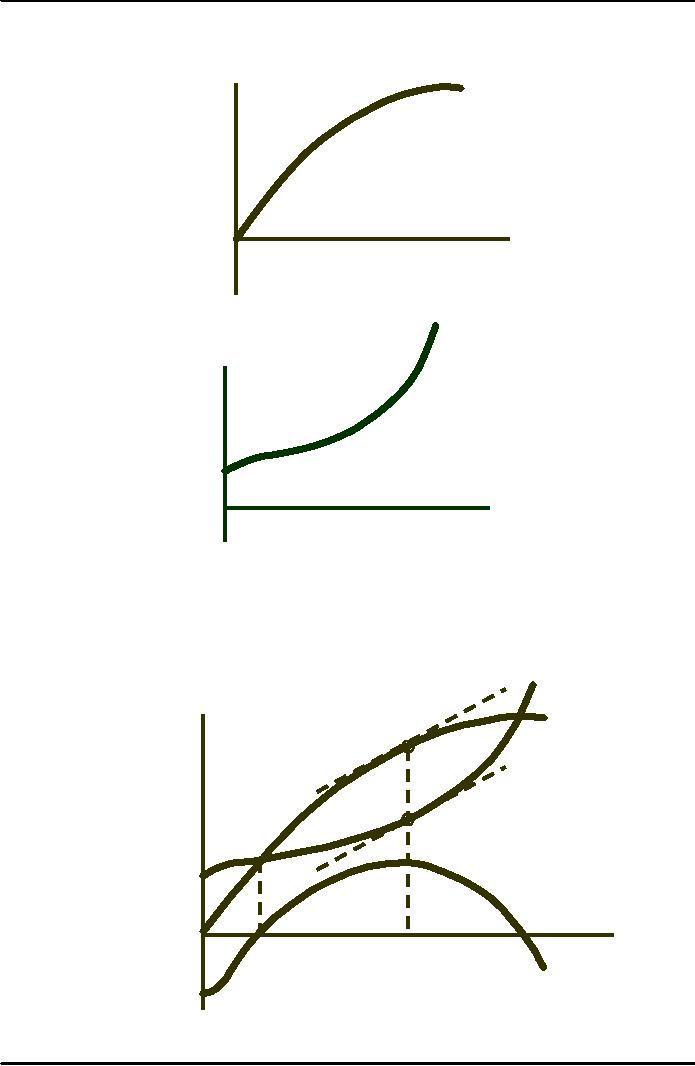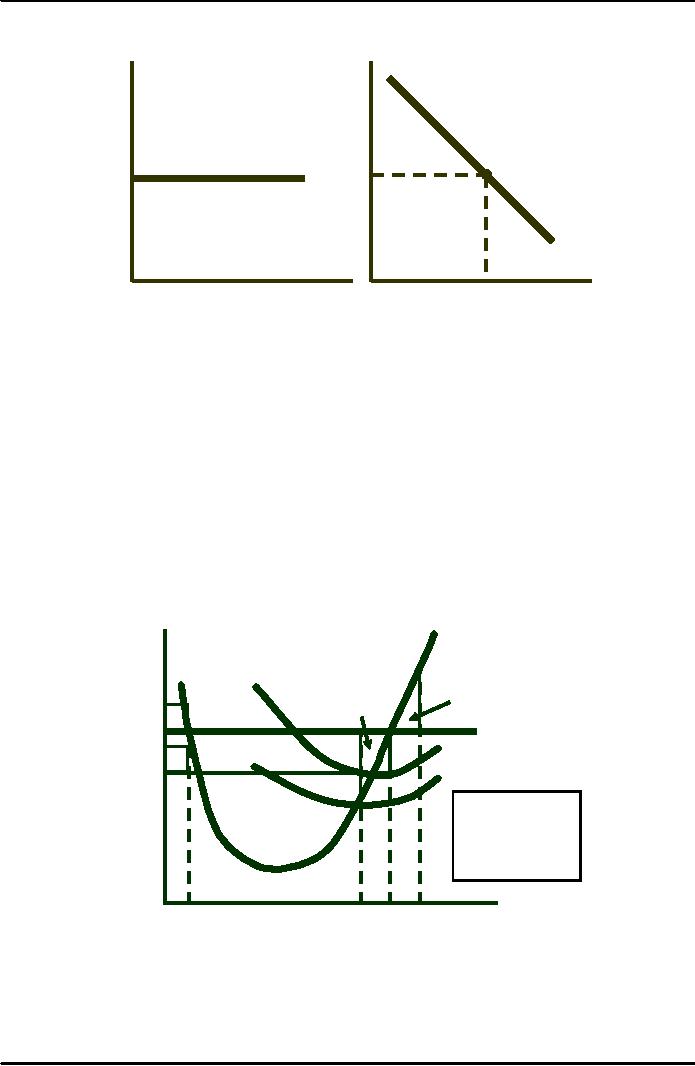 |
Perfectly Competitive Markets:Choosing Output in Short Run |
| << Production with Two Outputs--Economies of Scope:Cubic Cost Function |
| A Competitive Firm Incurring Losses:Industry Supply in Short Run >> |

Microeconomics
ECO402
VU
Lesson
22
Perfectly
Competitive Markets
Characteristics
of Perfectly Competitive
Markets
1)
Price taking
2)
Product homogeneity
3)
Free entry and
exit
Price
Taking
The individual
firm sells a very small
share of the total market
output and,
therefore,
cannot
influence market
price.
The individual
consumer buys too small a
share of industry output to
have any impact on
market
price.
Product
Homogeneity
The products of
all firms are perfect
substitutes.
Examples
�
Agricultural
products, oil, copper, iron,
lumber
Free
Entry and Exit
Buyers can
easily switch from one
supplier to another.
Suppliers can
easily enter or exit a
market.
Discussion
Questions
What are
some barriers to entry and
exit?
Are all
markets competitive?
When is a
market highly
competitive?
Do
firms maximize
profits?
Possibility of
other objectives
�
Revenue
maximization
�
Dividend
maximization
�
Short-run
profit maximization
Implications of
non-profit objective
�
Over the
long-run investors would not
support the company
�
Without
profits, survival
unlikely
Long-run profit
maximization is valid and
does not exclude the
possibility of altruistic
behavior.
Marginal
Revenue, Marginal Cost &
Profit Maximization
Determining
the profit maximizing level
of output
Profit
(�
)
= Total Revenue - Total
Cost
Total Revenue
(R)
= Pq
Total Cost
(C)
= Cq
Therefore:
�
(q) =
R
(q) -
C
(q)
113

Microeconomics
ECO402
VU
Profit
Maximization in the Short
Run
Cost,
R(q)
Revenue,
Total
Revenue
Profit
($s
per
year)
Slope
of R(q) = MR
0
Output
(units
per year)
C(q)
Cost,
Revenue,
Total
Cost
Profit
$
(per
year)
Slope
of C(q)
=
MC
Why
is cost positive when q
is
zero?
0
Output
(units per year)
Marginal
Revenue, Marginal Cost &
Profit Maximization
Marginal
revenue is the
additional revenue from
producing one more unit of
output.
Marginal
cost is the
additional cost from
producing one more unit of
output.
C(q)
Cost,
Revenue,
Profit
R(q)
A
($s
per
year)
B
q*
q0
0
Output
(units per year) �
(q)
114

Microeconomics
ECO402
VU
Comparing
R(q) and C(q)
Output levels:
0- q0:
�
C(q)>
R(q)
Negative
profit
�
FC + VC >
R(q)
�
MR > MC
Indicates
higher profit at higher
output
Question: Why
is profit negative when
output is zero?
Output levels:
q0 -
q*
�
R(q)>
C(q)
�
MR > MC
Indicates
higher profit at higher
output while Profit is
increasing
Output level:
q*
�
R(q)=
C(q)
�
MR = MC
�
Profit is
maximized
�
Question
Why is profit reduced
when producing more or less
than q*?
Output levels
beyond q*:
�
R(q)>
C(q)
�
MC > MR
�
Profit is
decreasing
Therefore,
it can be said:
Profits are
maximized when MC = MR.
ΔR
ΔC
MR
=
�
= R-C
MC
=
Δq
Δq
Profits
are maximized
when
:
MR
-
MC
= 0 so
that
Δ�
ΔR
ΔC
=
-
=
0
or
MR(q)
=
MC(q)
Δq
Δq
Δq
The
Competitive Firm
Price
taker
Market output
(Q) and firm output
(q)
Market demand
(D) and firm demand
(d)
R(q) is a
straight line
115

Microeconomics
ECO402
VU
Demand
& Marginal Revenue Faced by a
Competitive Firm
Price
Price
$
per
$
per
Firm
Industry
bushel
bushel
$
$
d
D
Output
Output
100
200
100
(millions
(bushels)
of
bushels)
The
competitive
firm's demand
�
Individual
producer sells all units
for $4 regardless of the
producer's level of
output.
�
If the producer
tries to raise price, sales
are zero.
�
If the
producers tries to lower
price he cannot increase
sales
�
P
= D = MR = AR
Profit
Maximization
�
MC(q)
= MR = P
Choosing
Output in Short
Run
We
will combine production and
cost analysis with demand to
determine output and
profitability.
A
Competitive Firm Making a
Positive Profit
M
Price
60
($
per
unit)
50
Lost
profit for
Lost
profit for
qq <
q*
q2 >
q*
A
D
AR=MR=
40
ATC
C
B
AVC
30
At
q*:
MR = MC
q1 : MR > MC and
and
P > ATC
q2:
MC > MR and
q0:
MC = MR but
�
= (P
- AC) x q*
MC
falling
or
ABCD
10
0
1
2
3
4
5
6
7
8
9
10
11
Output
q
q
q q
*
116
Table of Contents:
- ECONOMICS:Themes of Microeconomics, Theories and Models
- Economics: Another Perspective, Factors of Production
- REAL VERSUS NOMINAL PRICES:SUPPLY AND DEMAND, The Demand Curve
- Changes in Market Equilibrium:Market for College Education
- Elasticities of supply and demand:The Demand for Gasoline
- Consumer Behavior:Consumer Preferences, Indifference curves
- CONSUMER PREFERENCES:Budget Constraints, Consumer Choice
- Note it is repeated:Consumer Preferences, Revealed Preferences
- MARGINAL UTILITY AND CONSUMER CHOICE:COST-OF-LIVING INDEXES
- Review of Consumer Equilibrium:INDIVIDUAL DEMAND, An Inferior Good
- Income & Substitution Effects:Determining the Market Demand Curve
- The Aggregate Demand For Wheat:NETWORK EXTERNALITIES
- Describing Risk:Unequal Probability Outcomes
- PREFERENCES TOWARD RISK:Risk Premium, Indifference Curve
- PREFERENCES TOWARD RISK:Reducing Risk, The Demand for Risky Assets
- The Technology of Production:Production Function for Food
- Production with Two Variable Inputs:Returns to Scale
- Measuring Cost: Which Costs Matter?:Cost in the Short Run
- A Firm’s Short-Run Costs ($):The Effect of Effluent Fees on Firms’ Input Choices
- Cost in the Long Run:Long-Run Cost with Economies & Diseconomies of Scale
- Production with Two Outputs--Economies of Scope:Cubic Cost Function
- Perfectly Competitive Markets:Choosing Output in Short Run
- A Competitive Firm Incurring Losses:Industry Supply in Short Run
- Elasticity of Market Supply:Producer Surplus for a Market
- Elasticity of Market Supply:Long-Run Competitive Equilibrium
- Elasticity of Market Supply:The Industry’s Long-Run Supply Curve
- Elasticity of Market Supply:Welfare loss if price is held below market-clearing level
- Price Supports:Supply Restrictions, Import Quotas and Tariffs
- The Sugar Quota:The Impact of a Tax or Subsidy, Subsidy
- Perfect Competition:Total, Marginal, and Average Revenue
- Perfect Competition:Effect of Excise Tax on Monopolist
- Monopoly:Elasticity of Demand and Price Markup, Sources of Monopoly Power
- The Social Costs of Monopoly Power:Price Regulation, Monopsony
- Monopsony Power:Pricing With Market Power, Capturing Consumer Surplus
- Monopsony Power:THE ECONOMICS OF COUPONS AND REBATES
- Airline Fares:Elasticities of Demand for Air Travel, The Two-Part Tariff
- Bundling:Consumption Decisions When Products are Bundled
- Bundling:Mixed Versus Pure Bundling, Effects of Advertising
- MONOPOLISTIC COMPETITION:Monopolistic Competition in the Market for Colas and Coffee
- OLIGOPOLY:Duopoly Example, Price Competition
- Competition Versus Collusion:The Prisoners’ Dilemma, Implications of the Prisoners
- COMPETITIVE FACTOR MARKETS:Marginal Revenue Product
- Competitive Factor Markets:The Demand for Jet Fuel
- Equilibrium in a Competitive Factor Market:Labor Market Equilibrium
- Factor Markets with Monopoly Power:Monopoly Power of Sellers of Labor